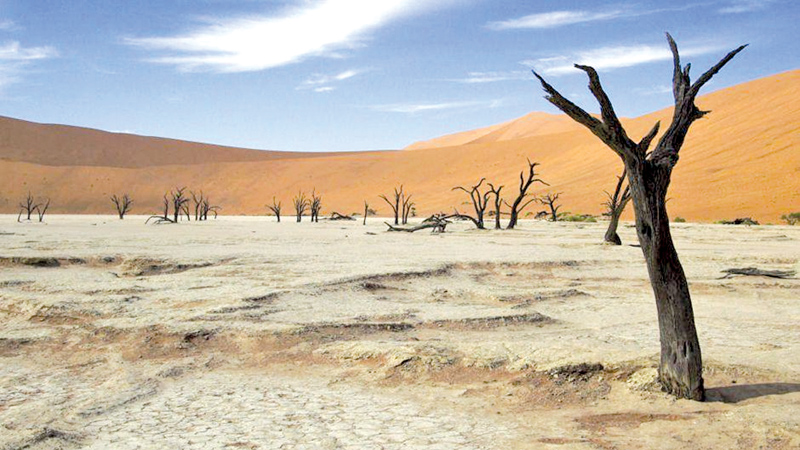The most important line in this planet is the coastline. But things are changing now. We have to see this new reality and we need to separate fact from fiction. Through a quagmire of politics, emotion and belief, we have lost sight of what is happening to our shoreline and it is time that we all face our real threat - that of climate change (see www.HighTideOnMainStreet.com).
All over the world, the danger is similar: glaciers are disappearing from Alaska to South Africa. This is the reality, the ice is melting and sea levels are rising. This has resulted in the shoreline beginning to move inland. This is obvious, but the ratio of occurrence is incredible: for each foot of rise in sea level, the average global shoreline moves about 300ft inland. For some countries this ratio could be different. These changes are a result of the Earth’s temperature being 1.50F warmer than it was just a century ago. This may not seem like much, but if you consider that the heat from human emissions is roughly equal to 400,000 atomic bombs exploding across the planet every single day, it is significant. Ice melts at 320C and it does not care for your political party or if you believe in climate change or not.
Carbon emissions and rising sea levels
 Figure 1; Changes in global temperature, sea level rise and CO2 concentration. (Courtesy www.HighTideOnMainStreet.com) |
Sea level rises; global temperature fluctuations and greenhouse gas emissions have had a regular pattern for over millions of years. As it is shown in the CO2 emission pattern (Figure 1), the concentration at present has steadily reached up to 400ppm. Consequently, it is now predicted that the amount of CO2 concentration could increase up to 1,300ppm by 2100.
This realization has created the need for us to pursue alternative energy sources to cut down our use of fossil fuels that contribute to increasing greenhouse gas emissions. Models very confidently predict that this could result in an increase in the global surface temperature between 2.50C and 7.80C over pre-industrialized levels. This means that we will not be able to stop the rise completely, but we can slow it down.
Green technology, energy and switching onto sustainable practices can no longer impede the inevitable rise of our sea levels, but the right practices can slow down this impending doom. Further, we need to start adapting to rising sea levels and the possibility of a future with a more unpredictable climate.
Understanding climate change
Climate change has invariably brought out new topics of discussion in the lives of academics to understand this new phenomena. Research carried out in Bangladesh has found that, whichever adaptive strategy proposed for climatic changes, the strategies would not be effective if the victims of its impact do not understand climate change. The concept of environmental migration in the meantime has been mostly discussed in the West Africa region with special reference to forced migration. These studies related to West Africa have revealed that climate change alone is not the cause for migration out of the region. Moreover, when the consequences of climate stresses coincide with economic and social stresses, the probability of forced migration increases significantly (see Brown, O., 2009, Migration and Climate Change, IOM Migration research series). The poorest are the least able to adapt to these climate change scenarios and thus are the most vulnerable. So how can we enhance the resilience of the most vulnerable communities? It should be done through a holistic approach, rather than addressing the systems of social, environmental and economical separately.
Climate change like any problem has its positives and negatives. The most promising fact is that the globe will have to work together with a common goal of mitigating and adapting to climate change. The worst case scenario would be the collapse of food chains and increase in world hunger. When considering sea level rises, most climate change discussions point towards the disappearance of many of the greatest cities. This begs the question of what would happen to the poorest of the poor and the shoreline communities; especially that of the fishing communities in developing and least developed countries. The only hope left now is to have strong action taken by governments and civilians to change our reality.
China, the world’s largest greenhouse gas emitter has given its consent to move towards a green economy. Thus it is up to us, ordinary citizens to continue demanding that our political leaders tackle climate change, the hardest problem that humanity has ever faced. We also need to adapt to a shoreline which is shifting inland for the first time in human civilization and these changes need to be done sooner than later.




Add new comment